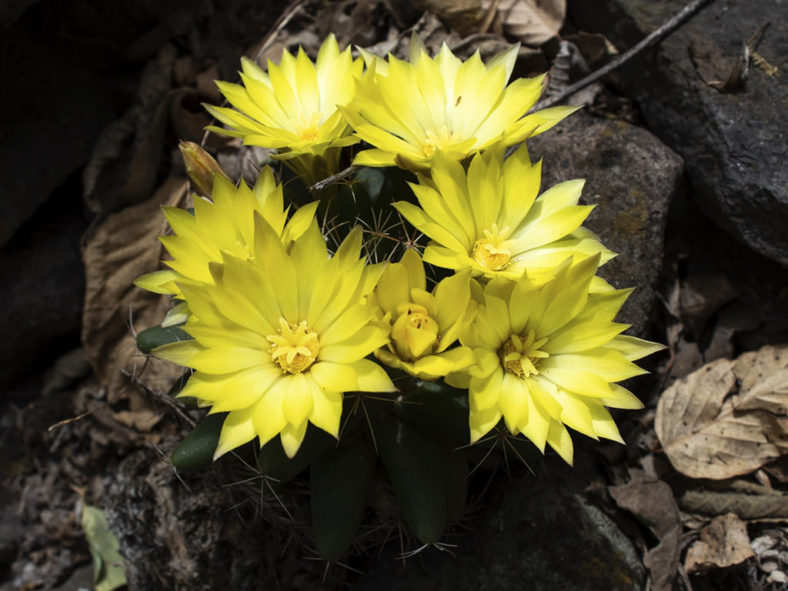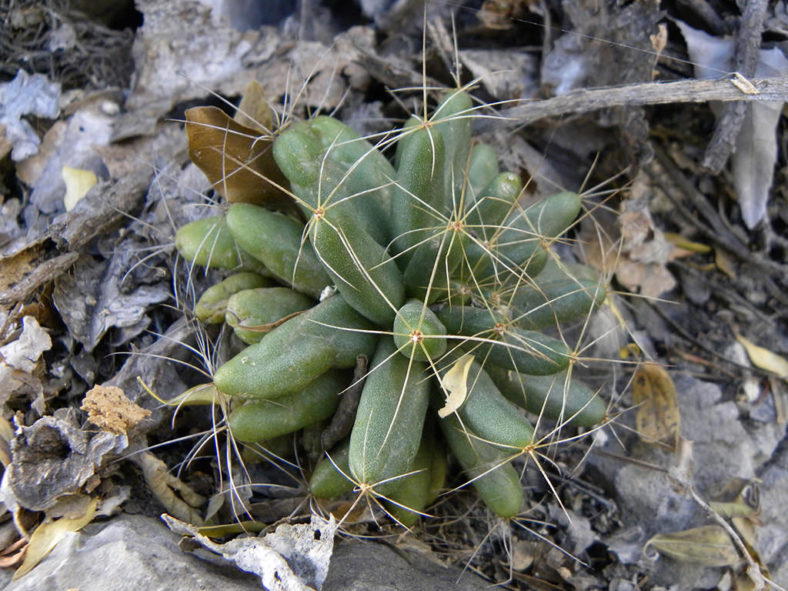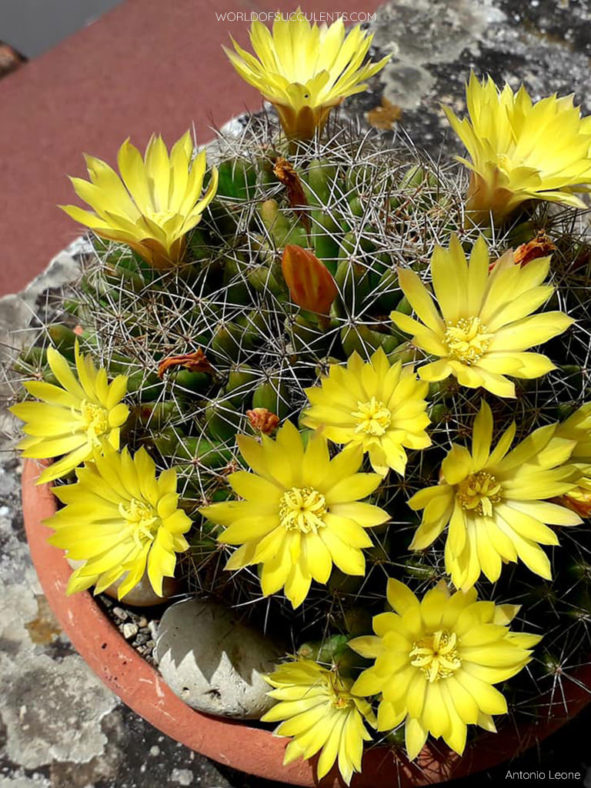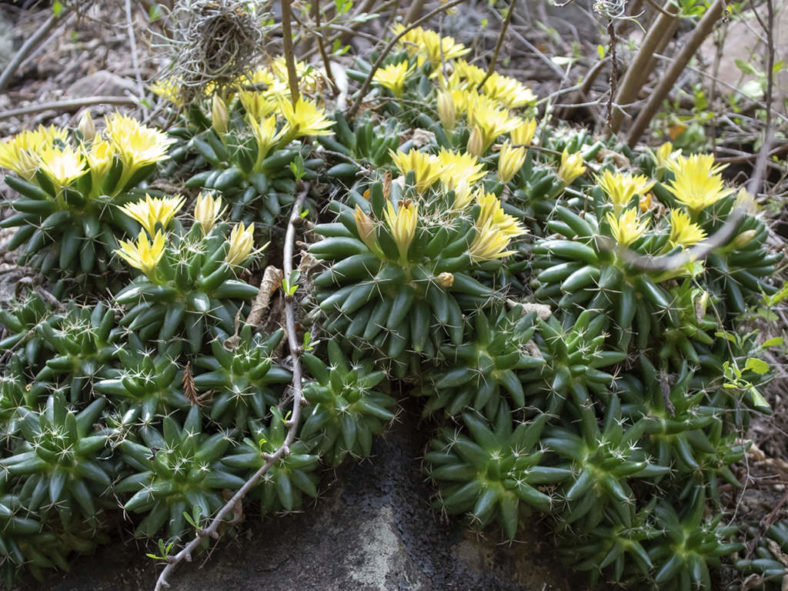Scientific Name
Mammillaria longimamma DC.
Common Name(s)
Finger Cactus, Finger Mound, Long Nipple Cactus, Nipple Cactus, Pineapple Cactus
Synonym(s)
Cactus longimamma, Dolichothele longimamma, Mammillaria gigantothele, Mammillaria hexacentra, Mammillaria laeta, Mammillaria longimamma var. longimamma, Neomammillaria longimamma
Scientific Classification
Family: Cactaceae
Subfamily: Cactoideae
Tribe: Cacteae
Subtribe: Cactinae
Genus: Mammillaria
Etymology
The specific epithet "longimamma" (pronounced "lon-jee-MAM-muh") means "long breast" and refers to the tubercles of this species.
Origin
Mammillaria longimamma is native to Mexico. It grows on limestone or volcanic soils under low shrubs and sparse vegetation in Guanajuato, Hidalgo, and Querétaro at elevations between 3,300 and 7,900 feet (1,000 and 2,400 m).
Description
Mammillaria longimamma is a small cactus with green stems covered with long, finger-like tubercles tipped with scant, white wool and a cluster of spines. It grows either solitary or in a dense clump. The stems are spherical and can reach a diameter of up to 4.8 inches (12 cm). Each areole bears 8 to 10 radial spines and usually one central spine. The radial spines are yellowish-white or brown and can grow up to 0.8 inches (2 cm) long, while the central spine is similar to the radial spines and can grow up to 1 inch (2.5 cm) long.
This cactus blooms profusely with large, bright yellow flowers from late spring to early summer. The flowers are funnel-shaped and can reach up to 2.4 inches (6 cm) in length, with a nearly equal diameter. The fruits are club-shaped and yellowish-green.

How to Grow and Care for Mammillaria longimamma
Light: Plant this cactus in an area of your garden that receives 4 hours of direct sunlight daily. When growing M. longimamma indoors, place it near the brightest window in your home or office to ensure it receives sufficient light. Place the pot on the balcony or in the garden for extra light from spring to fall, if possible.
Soil: M. longimamma requires a soil mix that provides root aeration and good drainage, whether grown outdoors or indoors. Use a commercial cactus potting mix, or create your own.
Temperature: This cactus is heat-tolerant but not cold-hardy. M. longimamma can withstand temperatures as low as 25°F (-3.9°C). USDA Plant Hardiness Zones 9b to 11b, 25°F to 50°F (-3.9°C to 10°C).
Watering: From spring to fall, water deeply and wait for the soil to dry before watering again. Never let the pot sit in water. Suspend watering in the winter.
Fertilizing: M. longimamma can benefit from fertilizing during the growing season. Apply a water-soluble fertilizer for cacti and other succulents. Suspend feeding during the winter when the plant goes dormant.
Repotting: Repot every two or three years into a slightly larger pot. The best time to repot your M. longimamma is late winter or early spring, but the repotting process can be done almost any time of the year.
Propagation: There are two easy ways to propagate M. longimamma: by seeds or by dividing offsets. The best time to remove offsets is in spring and summer. Sow the seeds in late spring or summer.
Learn more at How to Grow and Care for Mammillaria.
Toxicity of Mammillaria longimamma
M. longimamma is considered non-toxic to both humans and pets.
Links
- Back to genus Mammillaria
- Succupedia: Browse succulents by Scientific Name, Common Name, Genus, Family, USDA Hardiness Zone, Origin, or cacti by Genus
Photo Gallery
Click on a photo to see a larger version.


